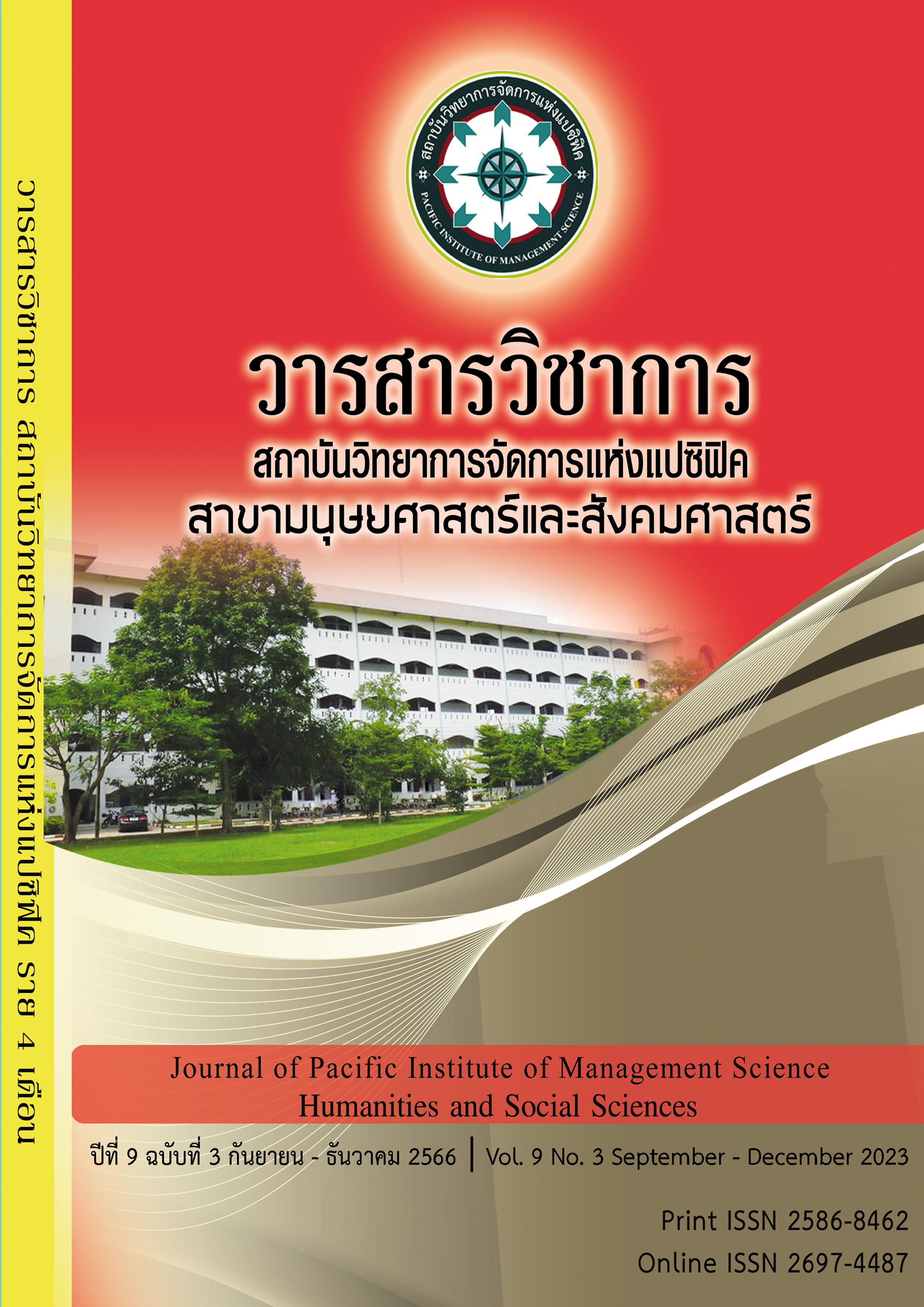Brand Equity Perceptions, Expectations, and Digital Marketing Communication Strategies Influencing Decision Making to use the Forklift Services of Customers in Eastern and Northeastern Regions
Keywords:
Brand Equity, Digital Marketing, ForkliftAbstract
The research objective was to study factors of organizational characteristics, brand equity perceptions, expectations, digital marketing communication strategies, and decision making to use the forklift service. The sample group was selected by purposive sampling. The research tool was questionnaires. Statistics used were percentage, mean, standard deviation, F-test and multiple regression analysis.
The research results revealed that1) the overall perceived brand value of the forklift services was at a high level. When considering each side, it was found that the sample group perceived the most brand loyalty factor, followed by brand association, brand awareness, and quality perception, 2) the overall expectation of the forklift services was at a high level. When considering each aspect, it was found that the sample expected the most place factor, followed by price and product and, 3) the overall digital marketing communication strategy of the forklift services was at a high level. When considering each aspect, it was found that the sample group had the most opinions on the digital marketing communication strategy factors of forklift services, followed by websites and Facebook.
The results of the hypothesis test revealed that 1) Organizations with different characteristics had different perceptions of the brand value and expectations toward forklift services, 2) Digital marketing communication strategies of forklift services such as YouTube and websites significantly influenced the decision to use forklift services and, 3) Brand perception of forklift services, i.e., brand association, brand awareness, and brand loyalty influence the decision to use forklift services.
References
กรมส่งเสริมการค้าระหว่างประเทศ. (2565). ธุรกิจโลจิสติกส์. นนทบุรี: กรมส่งเสริมการค้าระหว่างประเทศกระทรวงพาณิชย์.
ณัฐพล ใยไพโรจน์. (2559). Digital marketing concept & case study.นนทบุรี: ไอดีซีฯ.
มาลินี คำเครือ และ ธีระพันธ์ โชคอุดมชัย. (2562). กลยุทธ์การสื่อสารการตลาดออนไลน์ที่มีผลต่อพฤติกรรมการซื้อสินค้าโอทอป ผ่านสื่อสังคมออนไลน์ของผู้บริโภคในจังหวัดกาญจนบุรี. วิทยานิพนธ์ปริญญามหาบัณฑิต, มหาวิทยาลัยกาญจนบุรี.
วสันต์ เกียรติทนงศักดิ์. (2562). การรับรู้คุณค่าตราสินค้าและเครื่องมือสื่อสารทางการตลาดที่มี อิทธิพลต่อการตัดสินใจซื้อผลิตภัณฑ์ดูแลแผลเป็นฮีรูสการ์ของผู้บริโภคในเขต กรุงเทพมหานคร. สารนิพนธ์ บริหารธุรกิจมหาบัณฑิต สาขาวิชาการตลาด, มหาวิทยาลัยศรีนค รินทรวิโรฒ.
Aaker, D. A. (1991). Build brand. London: The Free
Cronbach, L. J. (1990). Essentials of psychological testing. (5th ed.). New York : Harper CollinsPublishers.
Kotler. (2012). Marketing Management. (10th ed.). New Jersey: Prentic-Hall Inc.
Nosrati, M., Karimi, R., Mohammadi, M., & Malekian, K. (2013). Internet Marketing or Modern Advertising! How? Why?. International Journal of Economy, Management and Social Sciences, 2(3), 56-63.
Taro Yamane. (1973). Statistics: an introductory analysis. New York: New York: Harper& Row
Downloads
Published
Issue
Section
License
Copyright (c) 2023 Pacific Institute of Management Science

This work is licensed under a Creative Commons Attribution-NonCommercial-NoDerivatives 4.0 International License.
บทความที่ได้รับการตีพิมพ์เป็นลิขสิทธิ์ของ สถาบันวิทยาการจัดการแห่งแปซิฟิค
ข้อความที่ปรากฏในบทความแต่ละเรื่องในวารสารวิชาการเล่มนี้เป็นความคิดเห็นส่วนตัวของผู้เขียนแต่ละท่านไม่เกี่ยวข้องกับสถาบันวิทยาการจัดการแห่งแปซิฟิค และคณาจารย์ท่านอื่นๆในสถาบันฯ แต่อย่างใด ความรับผิดชอบองค์ประกอบทั้งหมดของบทความแต่ละเรื่องเป็นของผู้เขียนแต่ละท่าน หากมีความผิดพลาดใดๆ ผู้เขียนแต่ละท่านจะรับผิดชอบบทความของตนเองแต่ผู้เดียว







